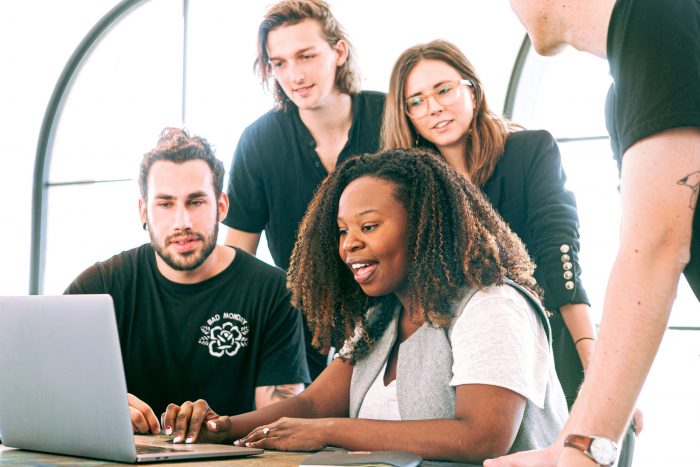
We believe that strengthening critical thinking and media literacy is not a simple transfer of knowledge. To effectively shape the way young people assess news sources, you need to acknowledge their frame of reference, view on society and background.
A much overlooked aspect of education is the societal context in which young news consumers grow up. What makes them susceptible for polarizing disinformation? What underlying frustrations need to be discussed and acknowledged beforehand?
In order to really step into the world of young people, a gap needs to be bridged. We’ve found it to be most effective when these young people are addressed by their peers: role models that actively use their shared frame of reference, and who are recognized as credible voices by students.
Positive confrontations are powerful tools to change your worldview
Teachers, but also youth workers or other first-line practitioners often feel too distant from young peoples’ perception to be able to really relate to them. Confronted with complex societal issues and tensions, they find it challenging to adequately guide a discussion surrounding these topics in a group full of young people, and therefore often ask for support.
Peer educators (young people between the age of 18-26) on the other hand, have no formal relationship in regards to the young people, and can therefore freely use their own similar personal experiences to relate to them. This common ground they share with the target audience makes them a credible voice, their ability to reflect on their experiences and share their hesitation, ‘turning points’, and reasons to stand up for democratic values makes them positive role models.

Peer education is based on the hypothesis that the perception of a messages’ credibility depends on whether you can relate to the source. Role models (age 18- 26) from different backgrounds – often vulnerable groups – receive special training to level with students by using their own personal experiences from day-to-day life.
They engage in positive confrontations with the pupils, and stimulate them to express their animosities: once out in the open, prejudices are discussed openly among all pupils, which makes the confrontation a positive one. The fact that peer educators from often polarised backgrounds form a unity in front of the group, gives a good example. They share their stories regarding feelings of exclusion, polarisation or distrust towards authorities, but always provide credible, positive perspectives.
Especially when it comes to countering online disinformation, the method of peer education is a valuable addition. From our experience, in order to fully understand the effects of social media on young people, one must have grown up with social media itself. We often get the feedback from teachers born in the eighties or earlier, that they can’t keep up with how fast the online media landscape evolves and that they cannot relate to their pupils, who get their news and information filtered through social media. If we want to educate young people how to assess information that comes to them through Instagram, Snapchat or TikTok, we need teachers that frequently use those apps and are familiar with its risks.